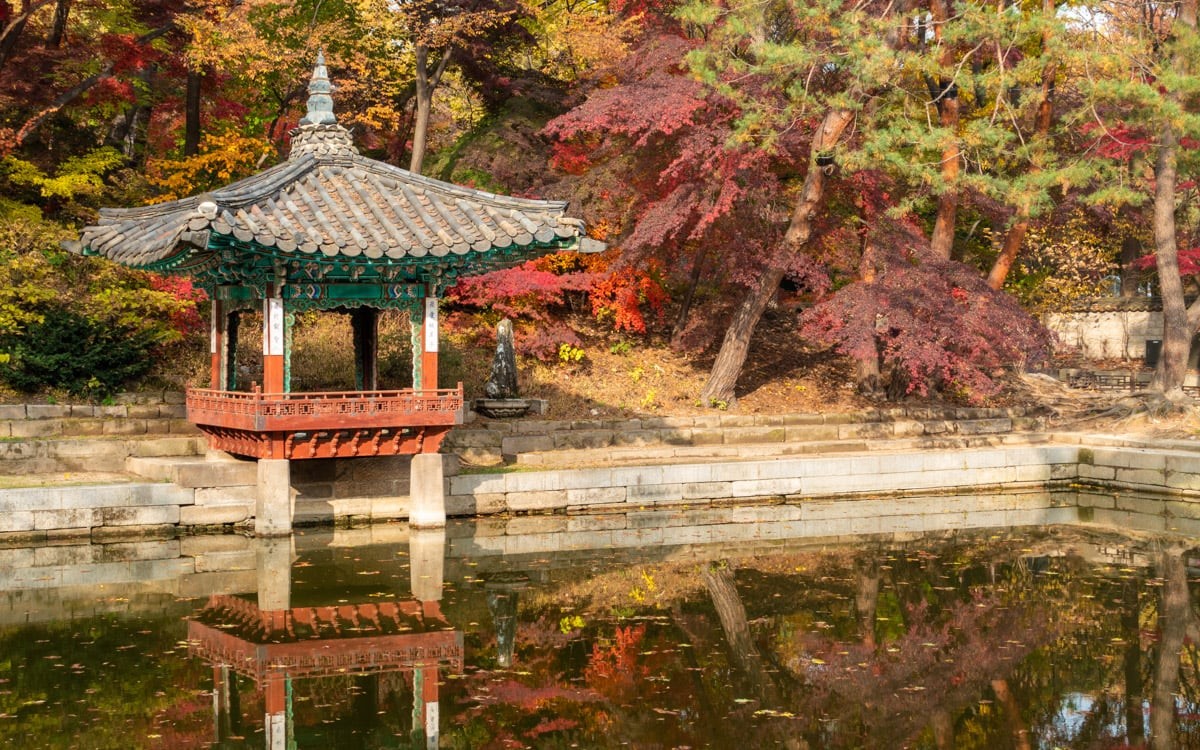
Gyeongbokgung Palace: The Majestic Heart of Seoul's Royal Heritage
Nestled at the base of Mount Bugaksan in the bustling heart of Seoul, Gyeongbokgung Palace stands as one of South Korea's most iconic and grand historical landmarks. Known as the "Palace Greatly Blessed by Heaven," Gyeongbokgung is the largest and arguably the most beautiful of the Five Grand Palaces built during the Joseon Dynasty. With its breathtaking architecture, serene gardens, and rich cultural significance, the palace offers visitors a window into the royal heritage of Korea and a peaceful escape from the modern city.
A Historical Masterpiece
Built in 1395, just three years after the founding of the Joseon Dynasty, Gyeongbokgung was the dynasty’s main royal palace for over 500 years. It served as the seat of power for kings, their families, and government officials during much of the dynasty’s reign. Despite being severely damaged during the Japanese invasions of the late 16th century and further destruction during the Japanese occupation in the early 20th century, Gyeongbokgung has been meticulously restored to its former glory.
The palace has witnessed Korea's political, social, and cultural history unfold over the centuries. While it stands as a testament to the grandeur of Korea’s past, it also symbolizes the resilience and strength of the Korean people, who have dedicated years to restoring this cultural gem.
Architectural Grandeur
Gyeongbokgung is renowned for its architectural elegance, reflecting the traditional aesthetics and harmony with nature that are central to Korean design principles. The palace complex is vast, covering over 40 hectares, and is surrounded by picturesque mountains that enhance its majestic appearance. The layout of the palace follows the principles of baesanimsu, which means “mountains at the back, water in the front,” ensuring a connection with natural elements that was believed to bring prosperity.
The main structures within the palace complex include the Geunjeongjeon Hall, the throne hall where kings were coronated and conducted state affairs. This hall, with its stunningly symmetrical design and intricate wooden carvings, is a prime example of the refined craftsmanship of the era. The use of dancheong, traditional Korean decorative patterns painted in vibrant colors, adds to the visual splendor of the palace, making it a feast for the eyes.
One of the most striking features of Gyeongbokgung is the Gyeonghoeru Pavilion, a beautiful structure built on an artificial pond and used for royal banquets and special ceremonies. The reflection of the pavilion on the water, framed by willow trees and mountains, creates a breathtakingly serene scene. The pavilion’s 48 stone pillars support the structure, giving it an air of lightness and grace, while the surrounding gardens add to the sense of tranquility.
Gardens and Natural Beauty
Beyond the grand buildings, Gyeongbokgung is surrounded by lush gardens and beautifully manicured landscapes, offering a peaceful retreat within the city. The palace gardens feature traditional Korean elements, such as ponds, pavilions, and carefully arranged stones and trees that create a harmonious balance with the natural environment. The changing seasons bring unique beauty to the palace grounds, with cherry blossoms in spring, verdant greenery in summer, fiery autumn leaves, and a pristine blanket of snow in winter.
The peaceful Hyangwonjeong Pavilion, situated on a small island in a lotus pond, is another enchanting spot within the palace grounds. The pavilion’s hexagonal shape and the delicate bridge connecting it to the mainland create a fairytale-like atmosphere, making it a favorite spot for visitors to pause and take in the beauty of the surroundings.
Cultural Significance
Gyeongbokgung Palace is not just an architectural masterpiece; it is also a cultural hub that offers visitors a chance to experience the traditions and heritage of Korea. The Changing of the Royal Guard Ceremony, held at the main gate (Gwanghwamun Gate), is one of the palace’s most popular attractions. Dressed in traditional Joseon-era military uniforms, guards perform this centuries-old ceremony with great precision, giving spectators a glimpse into the palace’s royal past.
The National Palace Museum of Korea and the National Folk Museum, located within the palace grounds, further enrich the cultural experience. These museums house artifacts from the Joseon Dynasty, including royal treasures, historical documents, and everyday objects, allowing visitors to learn more about Korea’s royal history and traditions.
The restoration of Gyeongbokgung has been a symbol of national pride for South Korea, and the palace continues to play an important role in preserving and promoting Korean culture. Special cultural events, traditional performances, and guided tours provide both locals and tourists with a deeper understanding of the significance of the palace and its place in Korean history.
A Modern Oasis of Serenity
Despite being located in the heart of bustling Seoul, Gyeongbokgung offers a tranquil escape from the modern urban landscape. The contrast between the towering skyscrapers and the timeless beauty of the palace creates a unique and captivating atmosphere. Walking through the palace grounds, visitors are transported to another time, surrounded by the grandeur of a bygone era while still being connected to the vibrant pulse of the modern city.
Whether it is the exquisite architecture, the peaceful gardens, or the deep historical significance, Gyeongbokgung Palace is a must-visit destination for anyone exploring Seoul. Its beauty lies not only in its physical structures but also in its ability to connect the past with the present, offering a serene yet awe-inspiring experience.
Gyeongbokgung Palace is more than just a historical monument; it is a cultural treasure that embodies the spirit and legacy of the Joseon Dynasty. From its grand halls and peaceful pavilions to its tranquil gardens, the palace invites visitors to step back in time and explore Korea’s royal heritage. The palace’s architectural beauty, combined with its serene natural surroundings and rich cultural significance, makes it one of Seoul’s most beloved landmarks. For anyone visiting the city, a journey through Gyeongbokgung is a journey through the soul of Korea itself.




